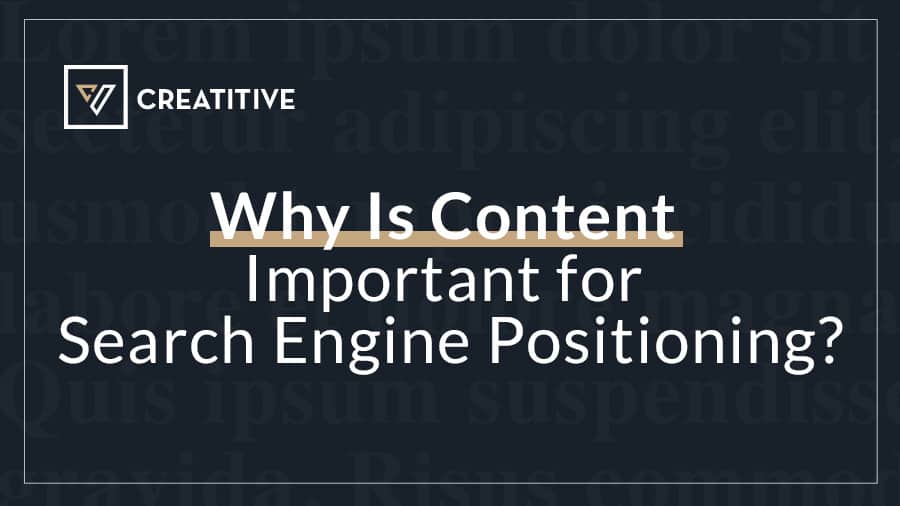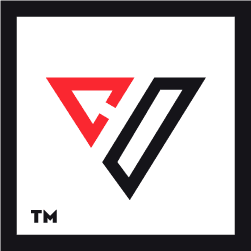

As a business owner, you should know that search engine positioning services are important for you and your business. Read to learn more.
Search engine positioning is important because it affects how much traffic your site receives. The more people you have visiting your site; the better chances you have of selling your products or services.
When conducting a search, most people tend to go no further than the first page of Google. It’s very important that your brand is one of the higher-ranking pages.
If your website’s content doesn’t rank on the first page of the search engine results page, it may not be seen by as many people. You can increase your content’s ranking by using specific keywords, optimizing web pages for search engines, and creating fresh and relevant content.
In order to get your website to appear at the top of search results, you have to invest some time and effort into search engine positioning and search engine optimization for your site (or have a digital marketing company do it on your behalf) using Google Search Console which is a service that can help you monitor your site’s ranking in Google Search results.
Google Search Console can help you improve your site’s visibility and for improving search engine positioning.
First, let’s discuss in detail what search engine positioning actually is, and what the difference is with Search engine optimization.
What is search engine positioning?
Search engine positioning is the art of maximizing search engine rankings for individual web pages. If we talk about search engine positioning, we usually think about Google. We can also do search engine positioning on Yahoo or Bing.
Getting a good search position can be accomplished through SEO. This is the art of optimizing a website so it ranks as high as possible on engines like google and improves the search of google users.
This is getting increasingly important when attempting to improve competitive positioning among a younger demographic. This demographic tends to be more web-oriented, so search engines and social media are particularly important for them.
WHY IS SEARCH ENGINE POSITIONING IMPORTANT?
Implementing a great search engine positioning strategy is fundamental for any online presence. Being in the highest position on search engines requires both dedication and attention to detail, which is why it is so important to opt for the services of a digital expert to aid you.
And if you are still not convinced about the importance of Creatitive’s search engine positioning services, here is why a great SEO strategy is necessary for any brand.
IT BOOSTS VISIBILITY
Just take a moment to consider this: you manage to position your website for a specific keyword that comes with 500,000 hits per month. In addition, the first search result revealed on a search engine receives up to 20% of the clicks, which in turn leads to 100,000 organic visitors per month.
Thus, good positioning can redirect traffic to your website with no additional costs, only if SEO is done correctly.
IT’S A LONG-TERM INVESTMENT
A correct SEO strategy represents a long-term investment. It is true that SEO positioning for a website comes with initial costs. However, if you manage to rank high on the first-page results on a search engine, you will receive an outstanding amount of high-quality traffic, without additional costs.
Let’s say that 1 in every 100 visitors ends up completing a purchase on your website. Each customer adds a value of $100 to your business, which will lead to an income per month of $100,000.
You can actually boost your overall monthly income a lot when ranking high for several important keywords.
IT CREATES A TRUSTWORTHY AND RELIABLE IMAGE OF YOUR BRAND
Authority and relevance represent the two most important factors related to SEO. This signifies that when your website is positioned in the first search results, visitors will automatically think that your site provides the information they were seeking making them your target audience.
Also, being highly ranked on a search query will suggest that other customers or visitors considered this particular website helpful.
Besides building trust, SEO can boost your impact on social media, too. This happens because links can be redistributed on social networks and make use of the content you used as part of your overall strategy.
A good strategy should be constantly modified. Google changes its algorithm frequently and trends & searches always change as well. This allows a business to analyze, measure, and optimize continuously with the sole purpose of receiving the best result and correcting any details within the strategy.
Increases Your Organic Traffic
The purpose of search engine placement is to have your pages appear among the highest results on Google or other search engines that bring organic traffic to the web.
When you rank highly on search pages, you get more clicks for your business each month.
As a result, your organic traffic goes up. That leads to more leads and conversions, and more revenue.
HOW DOES SEARCH ENGINE POSITIONING WORK?


All search engines use algorithms to analyze a website’s structure, content, and relationship to other sites. However, you’re probably most familiar with Google’s algorithm because that search engine is the most popular.
If you’re trying to optimize your search engine positioning, following rules to rank well on Google can likely help you on other search engines as well, because the principles are usually similar.
There are a lot of factors that go into how a search engine like Google decides which page to rank high. But broadly speaking, there are 4 main factors:
- Relevance: How well your webpage matches the search query
- Quality: How good and helpful your page content is for the particular search query
- Authority: How accurate and reliable does Google think your page is
- User experience: How much users engage with your page
The position of a website’s pages in search engine results pages (SERPs) is highly influenced by the site’s SEO. This includes the overall topics that Google thinks your site is an authority on, and for which it already ranks you high.
What Is Search Engine Optimization?
The main goal of SEO is to get your website to appear as the top result when people search for keywords related to your business.
This process can be difficult, but it is worth it because it will bring more attention and potential customers to your business.
TYPES OF SEO
On-page SEO
On-page SEO is all about the content on your website. You want to make sure that you’re using the right keywords and phrases to attract visitors from search engines.
Off-page SEO
Off-page SEO is all about the links to your website from other places on the internet. The more backlinks you have from reputable sources, the more trustworthy your website will be in the eyes of search algorithms.
Technical SEO
Technical SEO focuses on a website’s backend architecture, like site code. Just as Google cares about technical setup, it also cares about content. Therefore, this position is important for rankings.
There are many different ways to improve your SEO, such as by adding relevant content to your website, optimizing your website for certain keywords, and building links to your website.
Some Strategies For Better SEO
Make a list of topics
Keywords still play an important role in SEO, but they’re not the very first thing you need to do in order to see organic growth. Before anything else, you need to sit down and make a list of topics you want your content to cover.
To get started, come up with a list of around 10 words and terms that are associated with what you’re selling. Use an SEO tool to look up these words, see how often they’re being searched, and come up with different versions that make sense for your business.
Make a list of long-tail keywords based on these topics
In this step, you’ll start optimizing your pages for certain keywords. For every main topic you’ve uncovered, use a keyword tool to find five to 10 longer keywords that get into more detail about the original keyword.
Long-tail keywords or key phrases are more specific – and usually longer – than your average keyword. They don’t get as much search traffic, but they will usually have a higher conversion value because of how specific they are.
Build multiple pages for a different topic
Websites that try to rank for too many keywords at once are often next to impossible. But, where the rubber meets the road is with pillar pages. Pillar pages can serve as a table of contents, describing the main topic and giving readers a brief overview of subtopics that will be elaborated on in other posts.
setting up a blog post
Blogging is an excellent way to rank for keywords and engage your website’s users. Every blog post is a new web page, which gives you more opportunities to rank in SERPs. If you don’t already have a blog for your business, consider creating one.
Create a link-building plan
Off-page SEO is all about link-building – that is, attracting inbound links to your website from other sources on the internet. In general, sites with more authority that link back to your content have a greater impact on your rankings.
So take some time to brainstorm all the different ways you can attract inbound links. This could involve anything from guest blogging to social media outreach to simply creating great content that others will want to link to.
If you can get creative and put in the effort, you should see your off-page SEO improve in no time.
track your content’s success
SEO can take a lot of time and effort, as with any project, you’ll want to track your progress to ensure you’re moving in the right direction. By tracking your metrics, you can identify areas that need improvement and make necessary changes to your strategy.
There are many ways to monitor organic traffic – find the method that works best for you and stick with it. Whether it’s using a web analytics tool or creating your own dashboard in Excel or Google Sheets, make sure you’re monitoring your progress so you can adjust your strategy as needed.
Writing compelling meta descriptions
A meta description is a piece of text that appears below a title and link in search results. This description provides a brief overview of the page’s content to the person conducting the query, so they know what to expect from the results.
Search Engine Positioning Vs Search Engine Optimization?
POSITIONING vs SEARCH ENGINE OPTIMIZATION?
There’s little difference when talking about search engine positioning and SEO, and both terms are usually used to explain the same thing. All search engine positioning is SEO, but not all SEO is search engine positioning.
A lot of people think that SEO is just about improving your ranking on search engines, but that’s only a small part of it. Search engine positioning is one technique under the greater umbrella of SEO.
It specifically deals with making sure specific pages show up higher in search results. But SEO has other best practices too, like creating sitemaps to make it easier for search engines to find all your site’s pages, and doing keyword research to figure out which terms people are using to find sites like yours.
SEO refers to optimizing for organic search results. Search engine positioning is more focused on positioning your brand to the best of your abilities in search engines.
You will need SEO to do search engine positioning for the organic results or PPC to do it for the paid results. There are many moving parts to search engine positioning, but by far the most important component is content.
If you want your site to rank well, you have to make sure that its content is interesting, useful, and relevant. And it has to be optimized for search engine visibility using keywords.
How Content Affects Seo
In order to understand how content affects SEO, it’s important to first have a basic understanding of how a search engine work. Google and other search engines want to provide their users with the best information possible.
This way their users have a good user experience.
If the first result of a search links to a site that is spammy or full of false information, the user will not have a good experience and may discontinue using that search engine. That’s why Google ranks sites that are authoritative, trustworthy, and useful higher than others.
The importance of content for SEO can’t be understated. Without quality content, search engines won’t be able to index your pages properly, which in turn affects your ranking. And if you don’t have a solid SEO strategy, your pages will essentially be invisible to anyone who isn’t already familiar with your website Quality Content Generates Higher Click Through Rate (CTR).
Content that is optimized for SEO not only improves your visibility on search engines but also drives traffic to your website and encourages conversions. In other words, investing in SEO content is a savvy business move that can pay off big time.
What content you have on your site greatly affects whether people find it useful and trustworthy. Content should be original, accurate, and engaging.
It should be a means of providing users with the information they are looking for or helping them accomplish their goals, such as making a purchase or determining a location.
by continuing the process of regularly updating your existing content, and content creation you should also use internal linking for linking different contents on the website
SEO KEYWORDS
In addition to being well written, free of grammatical errors, and useful, content should also be easy for search engines to read. This is where keyword on-page optimization comes into play. Keywords are words or phrases that people use when they type a search into Google.
There are a lot of different terms that can be used to help improve your website’s ranking in search engines. SEO keywords are just one type of keyword. They are terms that you add to your online content in order to help improve your website’s ranking for those specific terms.
Most keywords are discovered during the keyword research process. And they are chosen based on a combination of three factors: search volume, competition, and commercial intent.
Essentially, you want the phrases or words that people are searching for to appear on your site so that Google finds your site to be a good match. (However, this does not mean that keywords should be stuffed into the content.
This SEO tactic is outdated and usually does more harm than good, there should be the use of target-specific keywords. )
WHY ARE SEO KEYWORDS IMPORTANT?
Keywords are essential for any SEO campaign since they are what people search for. If you want your website to rank higher, you need to optimize your content around keywords.
This means that you need to figure out which words and phrases people are searching for and then make sure that your website includes those terms.
Fortunately, there are a number of ways to find the right keywords, including using keyword research tools and looking at what your competitors are ranking for.
Once you have a list of the target keywords, you can start working on important SEO tasks like optimizing your website architecture, product and category pages, landing pages, and sales pages.
A keyword SEO tool offers you content topic ideas that can engage huge traffic on the web page people This helps you find content topics that your visitors are looking for.
How Do Search Engines Determine A Page’s Position?
Every search engine has different ways of analyzing a website’s content, structure, and relationship to other sites in order to produce search results.
This process starts with a spider, also called a web crawler, that goes through the internet and collects information about different pages on different websites. Once it has this information, it can start to index pages and figure out which sites are linked to which other sites.
Optimizing a website for search engines can be broken down into a few different factors.
Using the right keywords and key phrases, and having those keywords throughout the website – in the URL, title tag, and meta descriptions – is important. Search engines also take into account synonyms and related topics to get a sense of what the page is about.
Having a secure and trustworthy website is another factor that search engines look at. This includes things like mobile friendliness and loading speed.
And finally, where the searcher is located geographically also plays a role.
How Can You Check The Position Of A Page In A Search Engine Result Page?
The average ranking position is what you should look at to get an idea of where you’ll end up most often in regard to search engine ranking.
You can find this information on your Google Search Console page. Keep in mind that the process of ranking fluctuates, so you may be on the first spot for a specific term at one time and then rank lower on someone else’s device an hour later.
Google Search Console page will show you where specific terms are ranking and the average position. It will also present to you the click-through rate, giving you a good idea if the position you’re holding is getting the response you’re looking for.
If not, it might be time to edit or change your meta description to make it more appealing.
Search Engine Positioning Services
Search Engine Positioning Services refer to a marketing strategy that highlights a brand in a specific niche. Moreover, it consists of a group of techniques that aspire to improve the position of a website in a search engine.
Both optimization and positioning for the core search engines are necessary. Any business that wants to better a brand`s popularity and visibility on the web should focus on this.
The best way to ensure that you have quality content is to hire an expert to do the job. At Creatitive, our agency is staffed with a team of copywriters and SEO experts. They are pros at creating content for businesses and entrepreneurs across all athletic industries.
Conclusion
Rich content is very effective for search engine positioning. It’s important not to forget other factors like quality backlinks and an excellent mobile experience. Good content is just one of many factors that play an important role to rank in Google.
Your website’s position in the search engine results pages (SERPs) is determined by many factors. However, if you want to move up in the rankings, it’s important to focus on the little things that will give you an edge over your competition.
These small adjustments can be anything from using the right keywords to having a well-designed website.
Remember, an effective and successful SEO campaign will affect your positioning in a positive way. Get our services at Creatitive a try and see how we can help your business.







